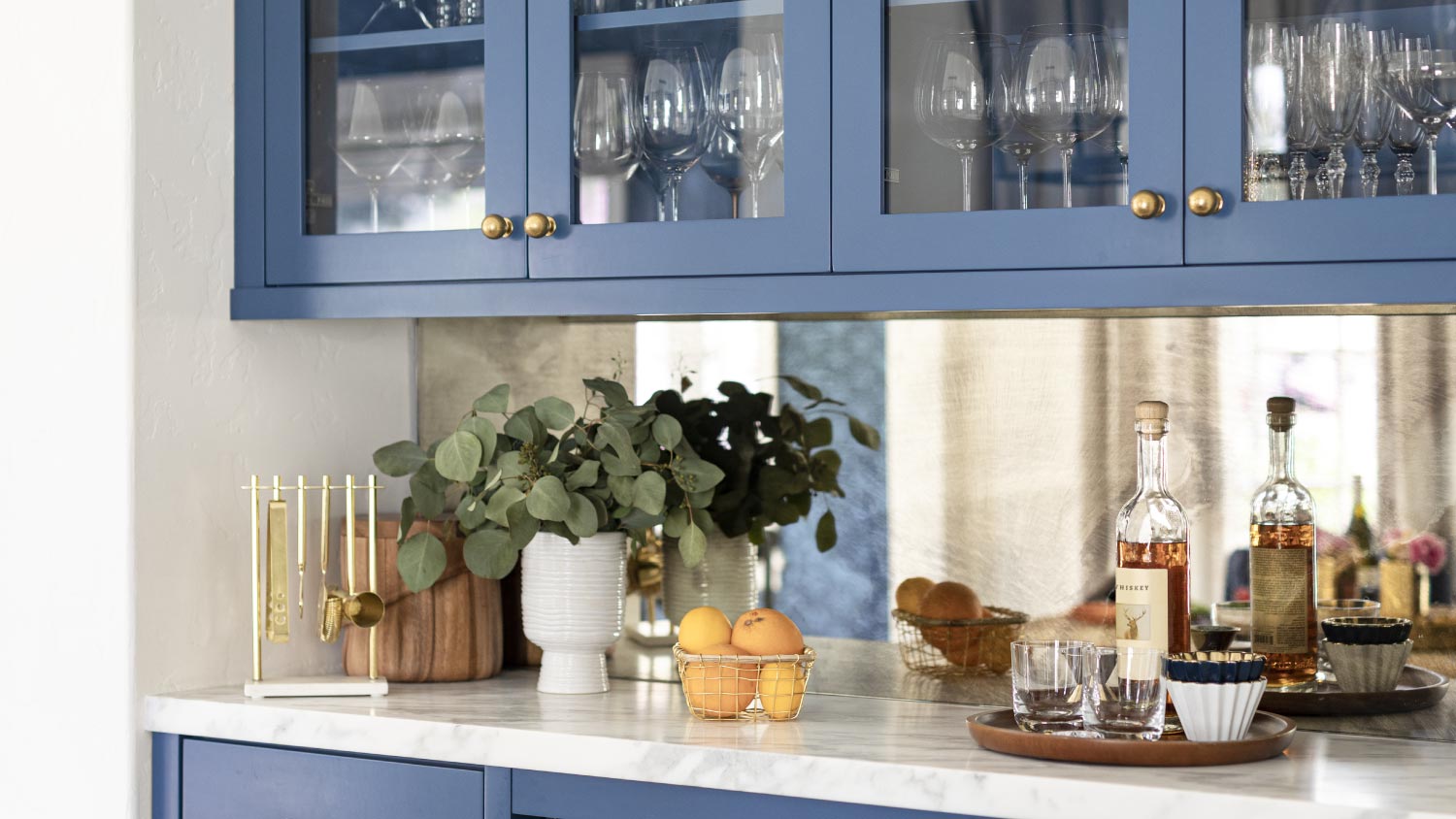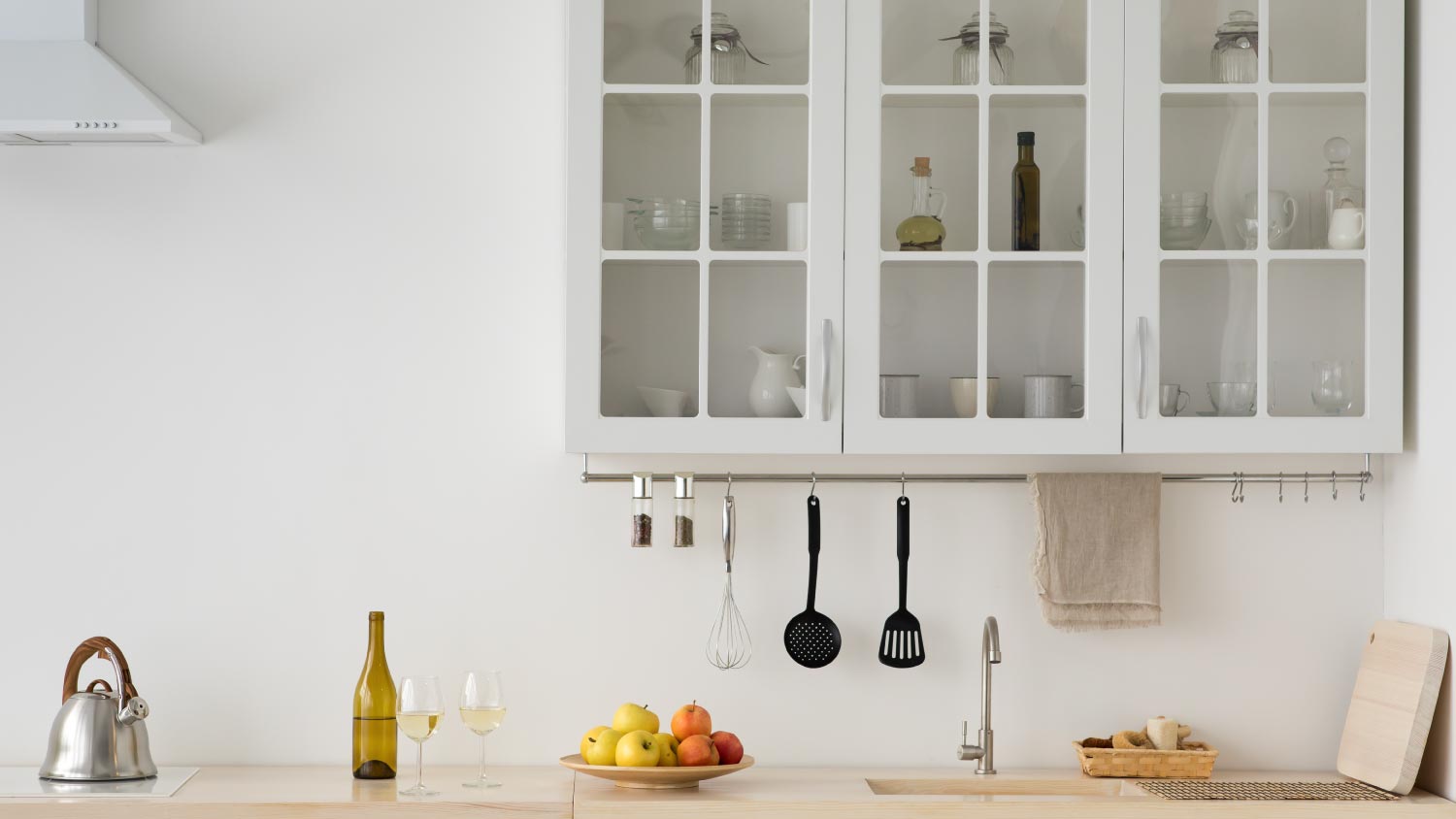
Discover the cost to stain cabinets, including average prices, key cost factors, and tips to help you budget and save on your cabinet staining project.
Don’t let your kitchen cabinets wear your dinner


A fresh, clean kitchen can make cooking more joyful (reheating leftovers counts, too). Pay special attention to your kitchen cabinets, which amass grease and gunk faster than you think. Read on for tips for protecting your kitchen cupboards so they last for many more years of morning coffee, holiday celebrations, and anniversary dinners.
There’s no way around it. To maintain your pretty kitchen cabinets, you must clean the kitchen on the regular—like every time you run the dishwasher. The best way to clean kitchen cabinets is with a little elbow grease and a soft cotton cloth dampened with warm water and mild dish soap.
Use the soapy water once a month on frequently used knobs and pulls, too. For wood cabinets, wipe them in the direction of the wood grain. After cleaning, wipe the cabinets down with a dry cloth or towel to absorb extra moisture.

When unidentifiable sauces have left a crusty mess on your cabinets, you’re going to have to bring out the serious cleaners.
For stains: Create a cleaning paste using baking soda and water. Use a sponge to scrub the stain until it lifts out. Then rinse it off with water.
For grease and grime: Try a mixture of vinegar and water to remove grime and film from your cabinet outsides.
For cabinet insides: Sweep out crumbs and make sure that honey bear hasn’t leaked, too.
For cabinet tops: Wipe down the grooves and the surface with an old toothbrush.
Set aside a couple of hours twice a year to give your kitchen a thorough cleaning. This is commonly done once in the fall and again as part of your spring cleaning. If you don’t have time to maintain the kitchen, you can always interview housekeeping services near you.
Some cleaning products will ruin your cabinet finish, while others shouldn’t be used around food. Skip cleaning products such as:
Bleach
Ammonia
Plastic or metal brushes
Steel wool
Abrasive sponges
Scouring pads
Nail polish remover
Paint thinners
Harsh or strong detergents and soaps
Silicone-based products
Solvents or petroleum-based products
Your new cabinets may have come with a repair kit or a manufacturer's guide. But if not, repairing scratches and knicks is easy with a few tools. You can find filler sticks that act like crayons to fill scratches and match the wood tone. Buy them through online retailers or hardware stores for about $5 to $15.
Use damp, not soaking, towels to wash cabinets. And never drape damp cloths over cabinet doors to dry—unless you like the peeling, bowed, and discolored look. Protect the cabinet finish and avoid discoloration by installing a towel rack or draping towels over the dishwasher or oven handle for easy reach.
You can also keep cabinets dry by:
Adding a lining to the inside of the cabinets
Making sure dishes are dry before putting them away
Using the exhaust fan while you are cooking
Using a splatter screen to keep grease from flying onto your cabinets
The oven’s self-cleaning setting uses serious heat that can damage nearby cupboards. Minimize the risk by moving the cabinet doors and drawers when cleaning the oven. The cabinet hinges usually have two clips holding the doors on. Pull those toward you until the clip releases. Then you can lift the door off. Also: good for you for cleaning the oven!
Who doesn't love a light, bright kitchen? But direct sun exposure can cause irregular fading and discoloration to wood and painted cabinets. Consider window coverings that you can close on bright days. Bonus: they’ll help you save on cooling costs in the summer.
Bring your wood cabinetry back with olive oil if it has lost its shine. Sure, you could use wood oils, too, but olive oil is safe to use around food, effective, and it’s already in your kitchen. Olive oil will also help break up grease and stains.
Just save the pricey bottle for dinner parties. Cabinet shining is the perfect job for an inexpensive bottle of olive oil.

Setting up kitchen cabinets in an efficient manner can help prevent damage. Place heavy items in lower cabinets and declutter the space to avoid jamming the cupboards when the doors close. Toss chipped mugs and plates, get rid of storage containers without a matching lid, or donate any small appliances that you never use (like that home funnel cake maker you swore you needed).
From average costs to expert advice, get all the answers you need to get your job done.

Discover the cost to stain cabinets, including average prices, key cost factors, and tips to help you budget and save on your cabinet staining project.

Discover the cost of resurfacing kitchen cabinets, including average prices, key cost factors, and tips to help you budget and save on your next kitchen update.

Discover the cost of glazing cabinets, including average prices, key cost factors, and tips to save on your cabinet glazing project.

If your cabinets need an upgrade, consider whether you should reface or refinish them based on the type you have in your home using our helpful guide.

We share the pros and cons of refacing kitchen cabinets so you can make the most of your remodeling budget. We also reveal a few alternatives to refacing.

You can bring your cabinets back to life without all the hassle. Here’s how to restore your kitchen cabinets without sanding or varnishing.